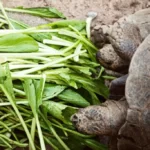Mulberry trees, with their sweet and juicy berries, have a special place in many gardens and landscapes. If you’re an enthusiast or gardener looking to expand your mulberry tree collection, learning how to propagate these trees is a valuable skill. In this guide, we’ll take you through the art of mulberry tree propagation, step by step. Whether you want to create new trees for your garden or share them with fellow tree lovers, understanding the methods of propagation is the first step to success. Let’s embark on this exciting journey of nurturing new mulberry trees.
- 🌳 Compact Size: Reaches a mature height of 6-10 feet, ideal for small gardens and container planting
- Prolific Fruiting: Produces sweet, blackberry-like mulberries from late spring through summer.
- 🌿 Self-Pollinating: Does not require a second tree for fruit production.
- 🌞 Easy to Grow: Thrives in USDA hardiness zones 5-10 with minimal maintenance.
- 🍓 Nutrient-Rich Berries: Mulberries are rich in vitamins, antioxidants, and fiber.
Mulberry Tree Propagation
Before we delve into the hands-on techniques, it’s essential to grasp the concept of tree propagation. This is the process of creating new trees by reproducing the genetic characteristics of an existing tree. Mulberry tree propagation allows you to replicate the desirable traits of your favorite mulberry trees, such as their fruit quality and growth habits. By mastering these methods, you can ensure that the new trees retain the characteristics you admire. Now, let’s explore the various methods of propagating mulberry trees, starting with one of the most popular approaches: propagation by cuttings.
Propagation by Cuttings
Propagation by cuttings is a reliable and widely used method to create new mulberry trees. It involves taking a part of an existing tree and encouraging it to grow into an independent tree. To get started, you’ll need to carefully select the right type of cutting, preferably one that is young and healthy. Timing is also crucial, as certain seasons are more conducive to successful cuttings. In the upcoming section, we’ll guide you through the step-by-step process of propagating mulberry trees from cuttings, ensuring that you can enjoy the delicious fruits and beauty of these trees in your own garden.
Propagation by Layering
Another effective method for propagating mulberry trees is through a technique known as layering. Layering involves encouraging a branch or shoot to develop roots while it’s still attached to the parent tree. To propagate a mulberry tree by layering, select a healthy and flexible branch. Gently wound the chosen branch by removing a small section of bark. Apply rooting hormone to the wounded area to stimulate root growth. Then, bend the wounded portion of the branch down and bury it in a prepared trench, leaving the tip exposed above the soil. As the season progresses, the branch will develop roots, and you can eventually cut it from the parent tree, creating a new mulberry tree with established roots. This method is particularly useful for those who want to ensure that the new tree is genetically identical to the parent.
Propagation by Seeds
Propagating mulberry trees from seeds is another viable option, though it may take longer than other methods. Begin by collecting ripe mulberry fruit and extracting the seeds. Afterward, sow the seeds in a well-prepared seedbed or pots, covering them lightly with soil. It’s important to stratify the seeds (expose them to cold temperatures) for a period to improve germination rates. As the seeds germinate and grow into seedlings, carefully transplant them to a permanent location in your garden or orchard. Keep in mind that while seed propagation can yield diverse mulberry trees, it may also take more time for them to mature and produce fruit.
Caring for Propagated Mulberry Trees
Caring for your newly propagated mulberry trees is crucial to their long-term health and success. Ensure they receive proper sunlight, as mulberries thrive in full sun. Adequate watering is essential, especially during the initial stages of growth, to establish a strong root system. Mulberries are generally adaptable to various soil types, but well-draining soil is ideal. As the trees grow, prune them to encourage a strong structure and fruitful branches. It’s also advisable to mulch around the base of the trees to retain moisture and prevent weeds. Regularly monitor for pests and diseases, applying appropriate treatments if necessary. With proper care and attention, your propagated mulberry trees will flourish and provide you with sweet, juicy mulberries in no time.
Common Challenges and Troubleshooting
As with any gardening endeavor, propagating mulberry trees can come with its share of challenges. One common issue is pests, particularly aphids and spider mites, which can target young mulberry trees. Regularly inspect the trees for signs of infestations and take appropriate measures, such as using insecticidal soap or introducing beneficial insects. Additionally, be vigilant for diseases like powdery mildew or bacterial leaf spot, which can affect mulberries. Adequate spacing between trees and good air circulation can help prevent these problems. Proper watering and drainage are essential to prevent root rot, a common issue in poorly-drained soil. Lastly, don’t be discouraged if some propagation attempts don’t succeed; it’s a learning process, and trial and error are natural parts of gardening.
Benefits of Propagating Mulberry Trees
Propagating mulberry trees offers several enticing benefits. Firstly, it allows you to expand your mulberry orchard without having to purchase new trees. You can also create disease-resistant varieties tailored to your specific growing conditions. Furthermore, propagating mulberry trees helps maintain the genetic traits of your favorite tree, ensuring its unique characteristics are preserved. The trees you propagate can provide an abundance of nutritious mulberries, perfect for fresh eating, jams, and pies. In addition to these practical advantages, mulberry trees offer shade and beauty, making them a valuable addition to your garden or landscape.
Conclusion
Propagating mulberry trees is a fulfilling journey for any gardening enthusiast. It not only allows you to nurture and share the bounties of these wonderful trees but also deepens your connection to the art of horticulture. Whether you choose cuttings, layering, or seeds, each method has its own unique appeal and advantages. With patience and care, you’ll watch your newly propagated mulberry trees flourish and provide you with delicious, homegrown mulberries for years to come. So, roll up your sleeves, get your hands dirty, and embark on the rewarding adventure of propagating mulberry trees. Your garden and your taste buds will thank you for it.




